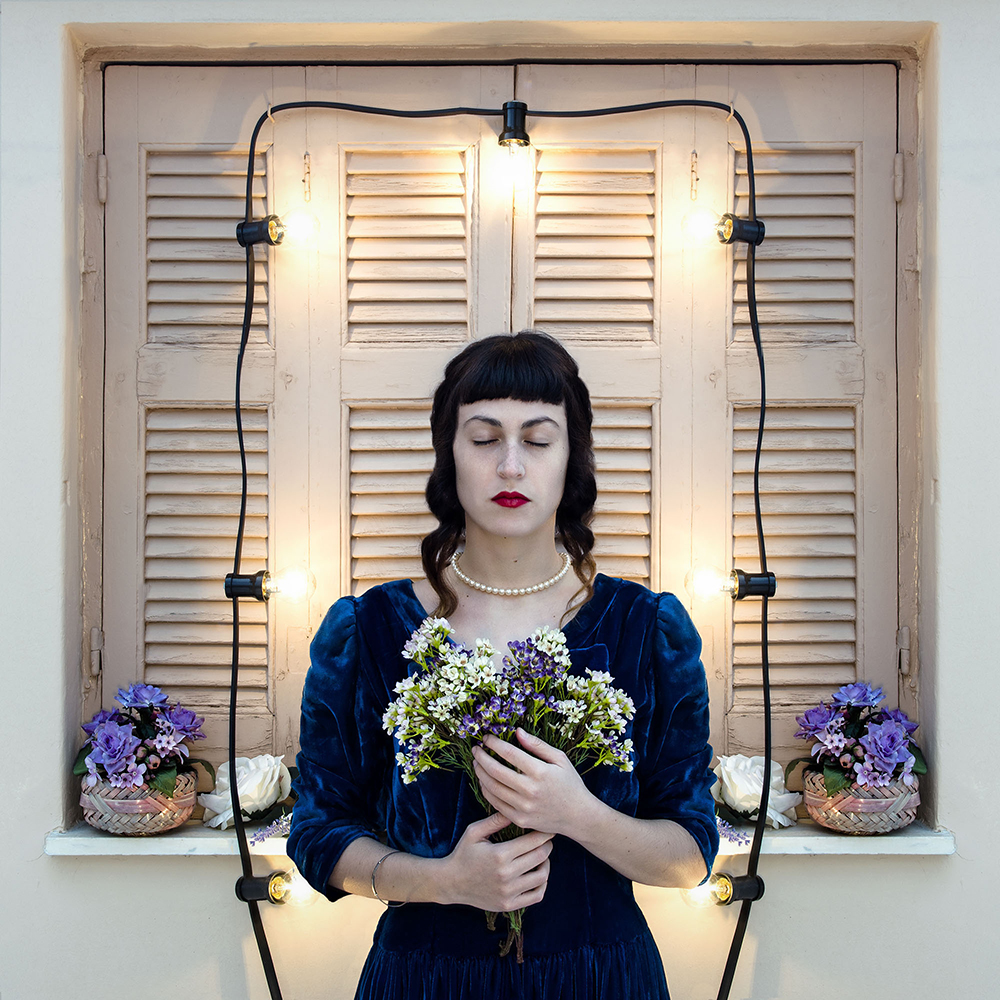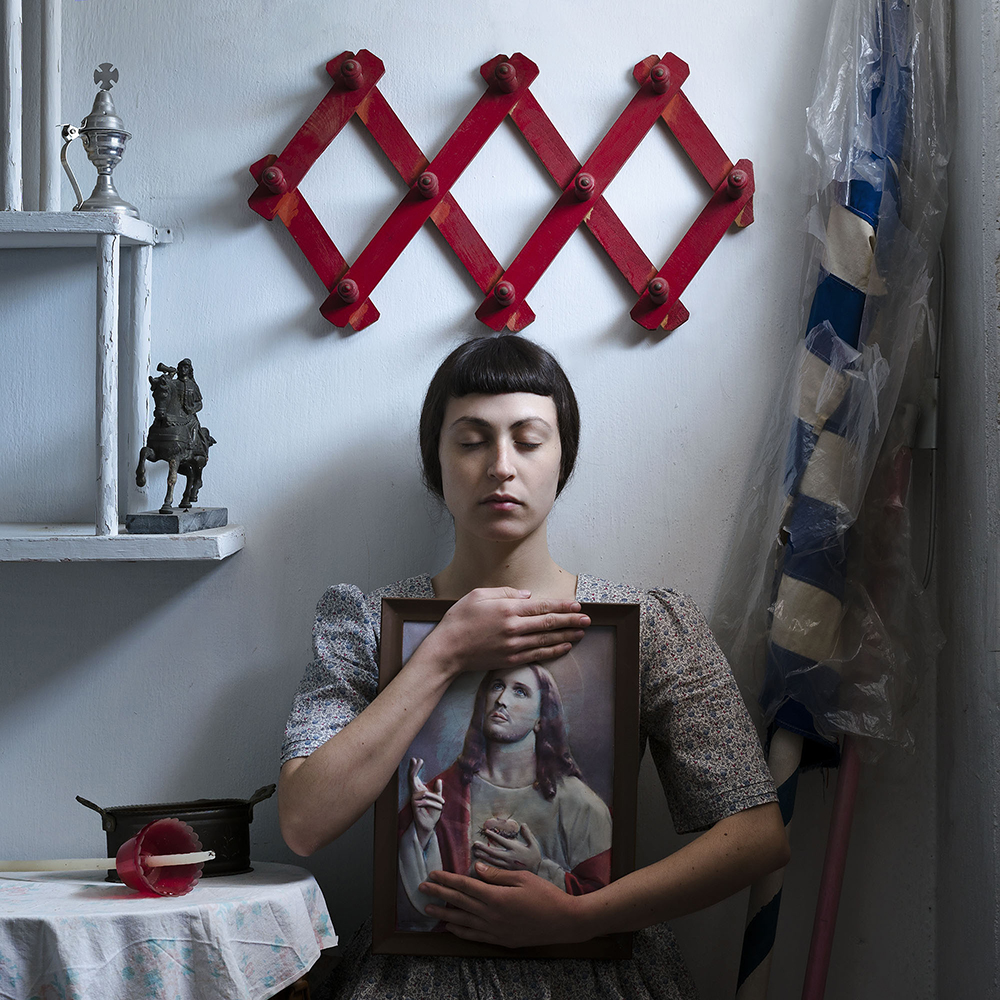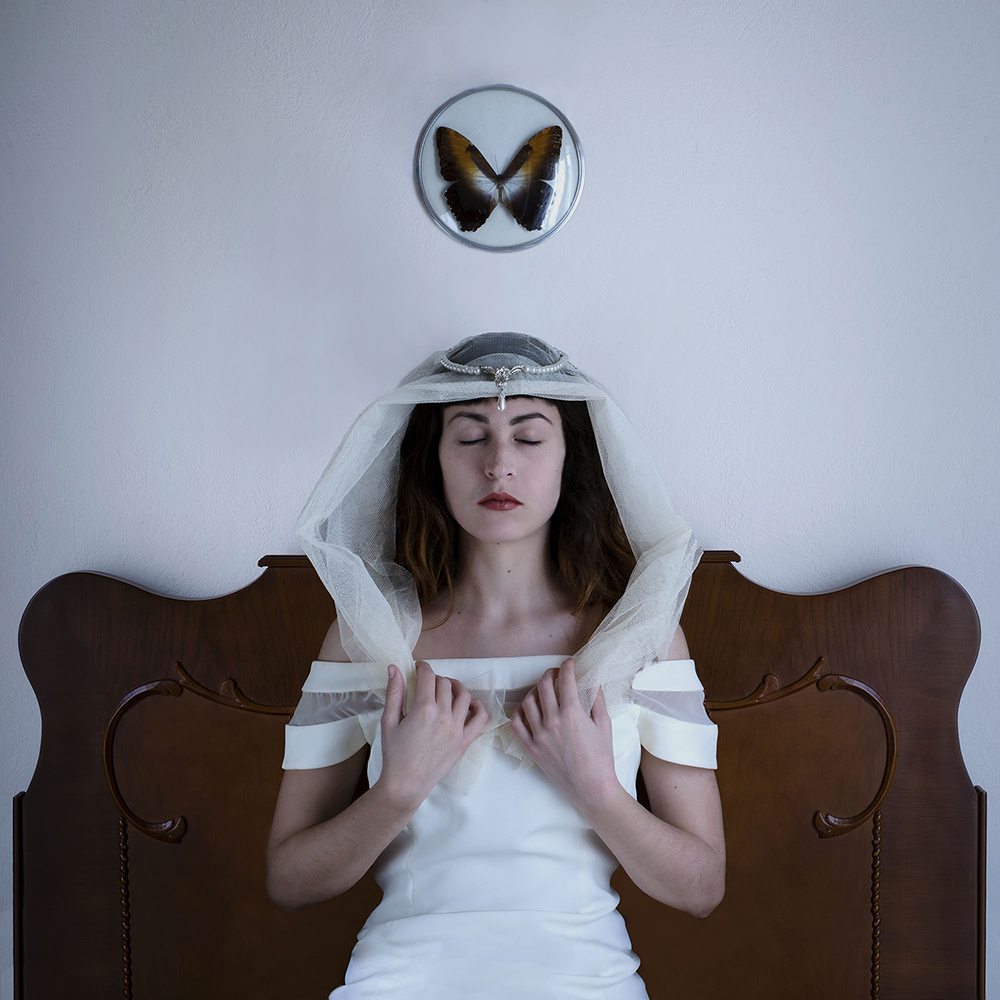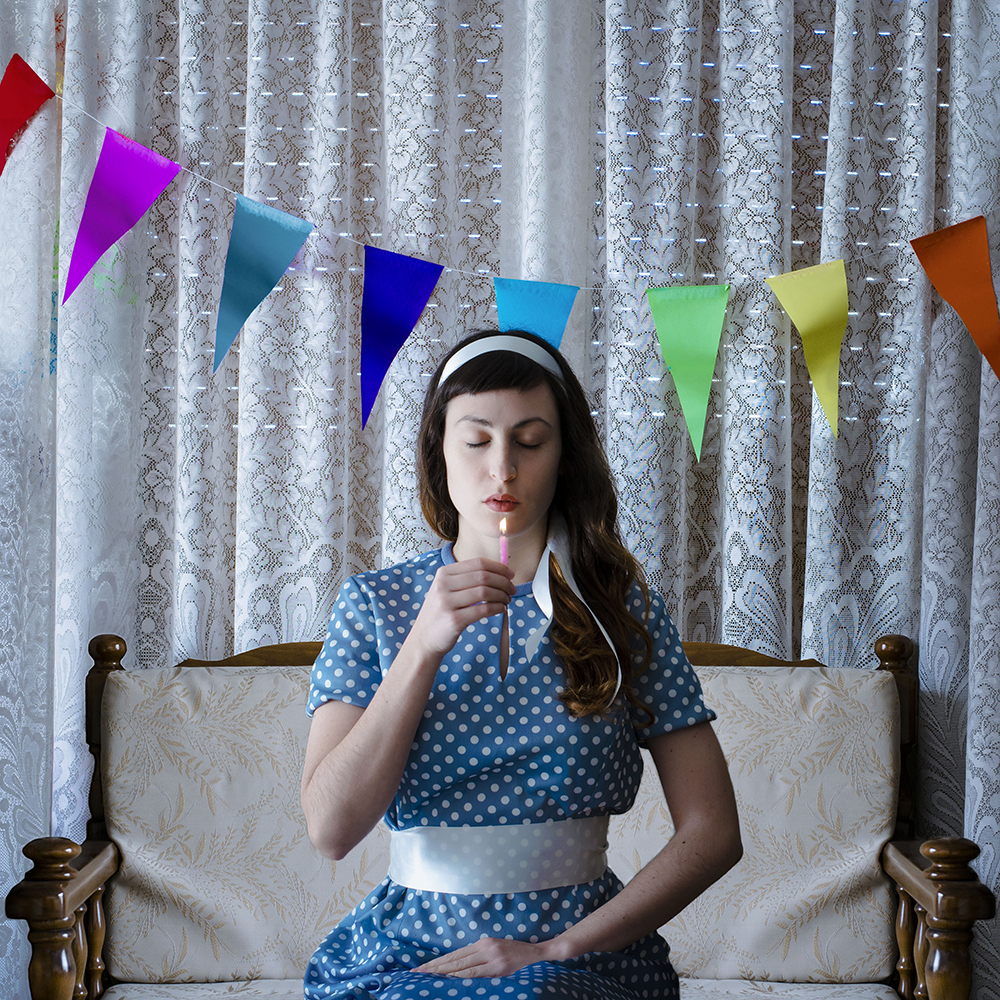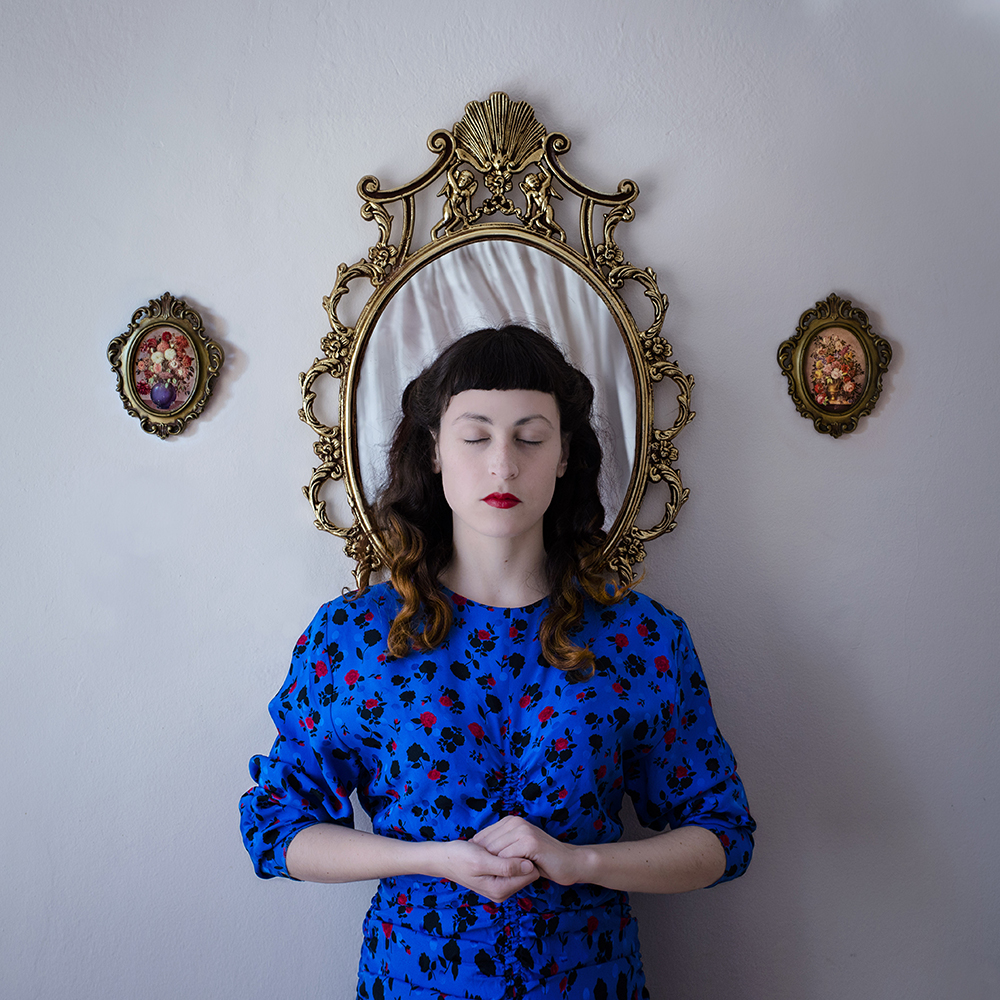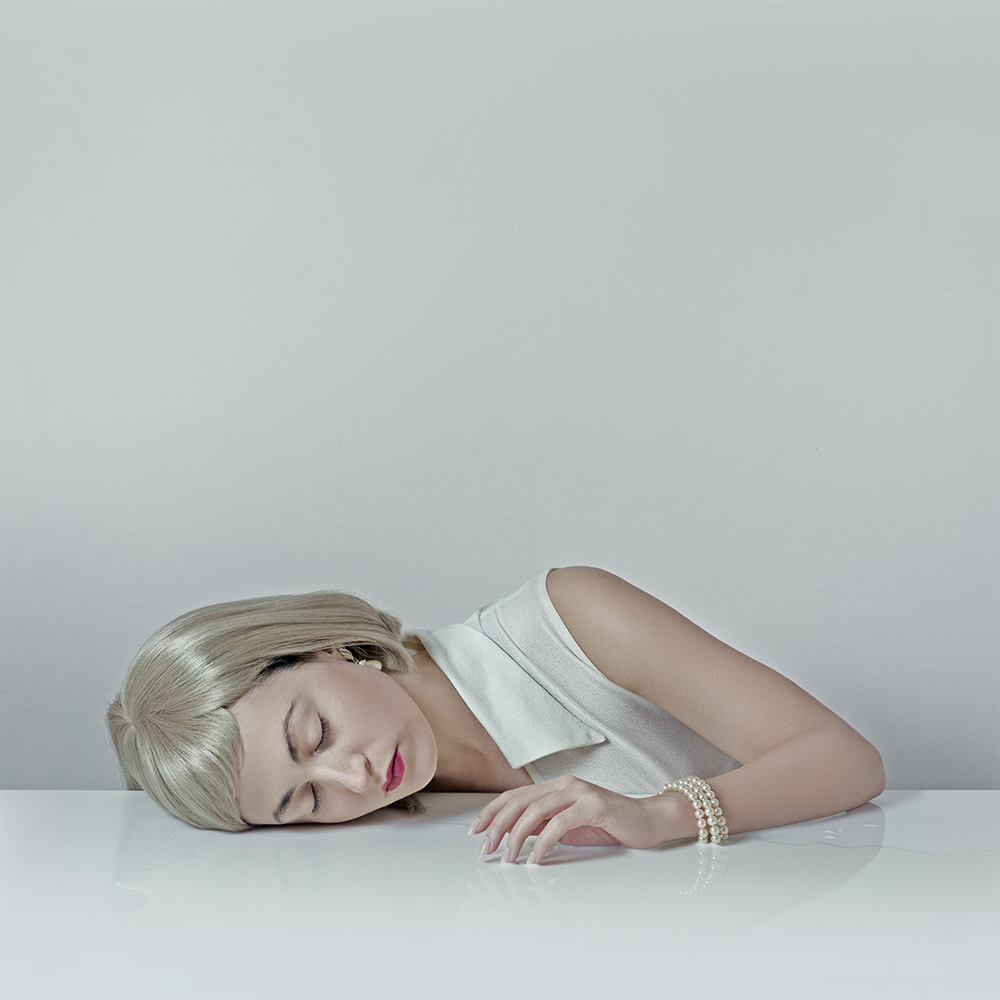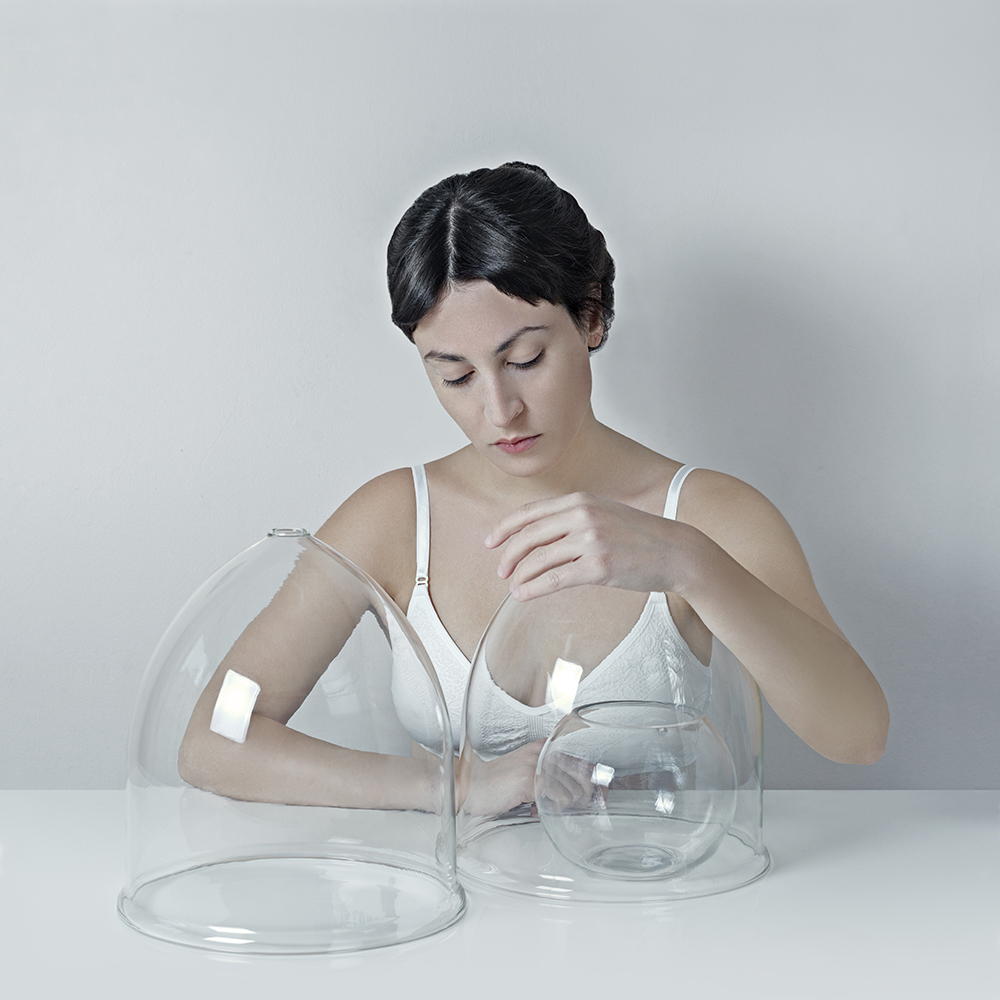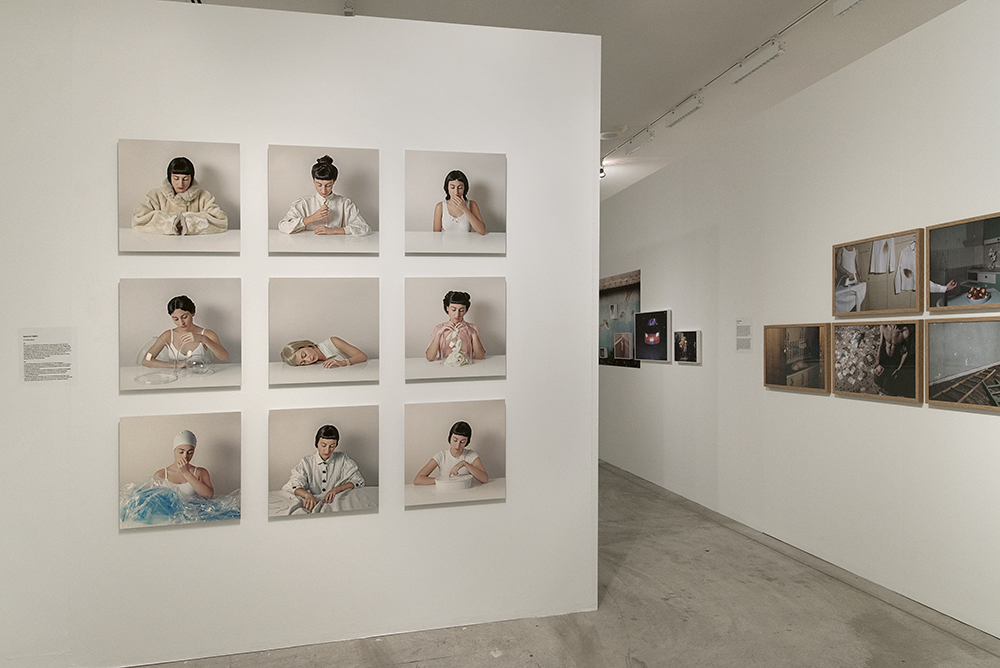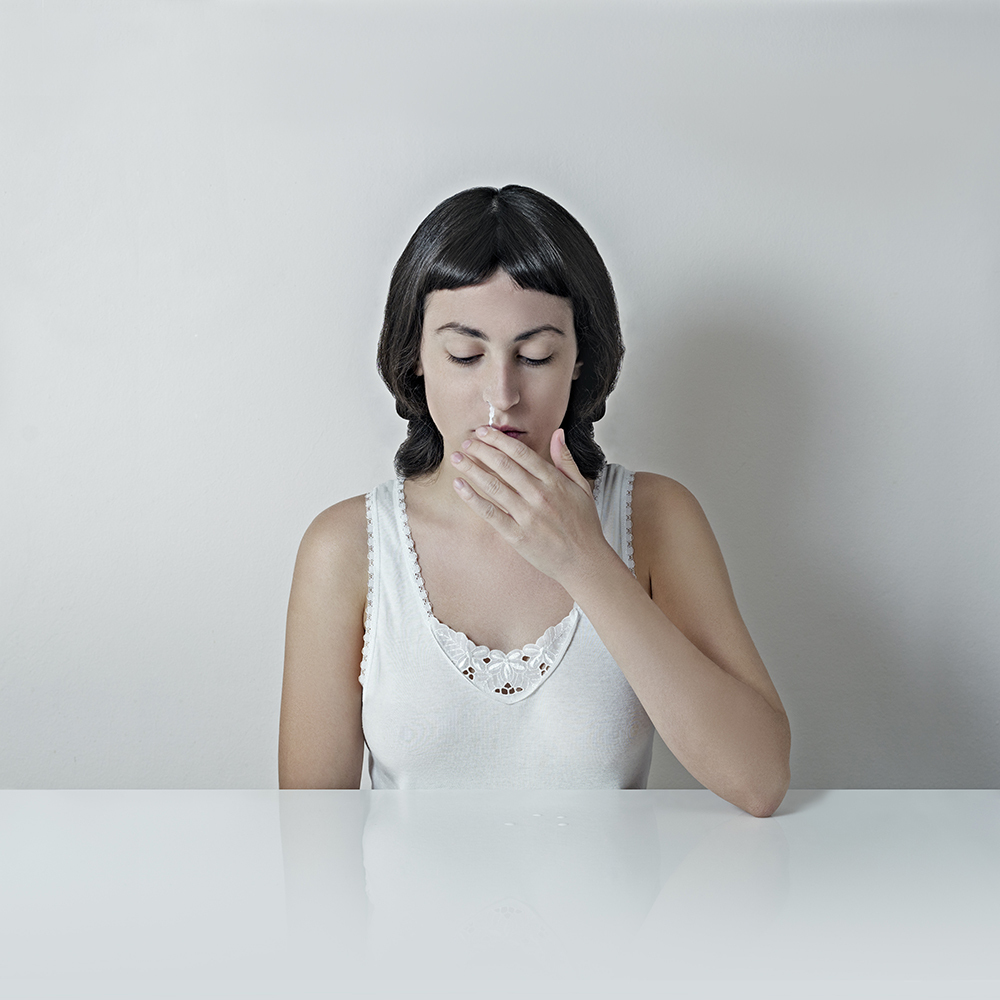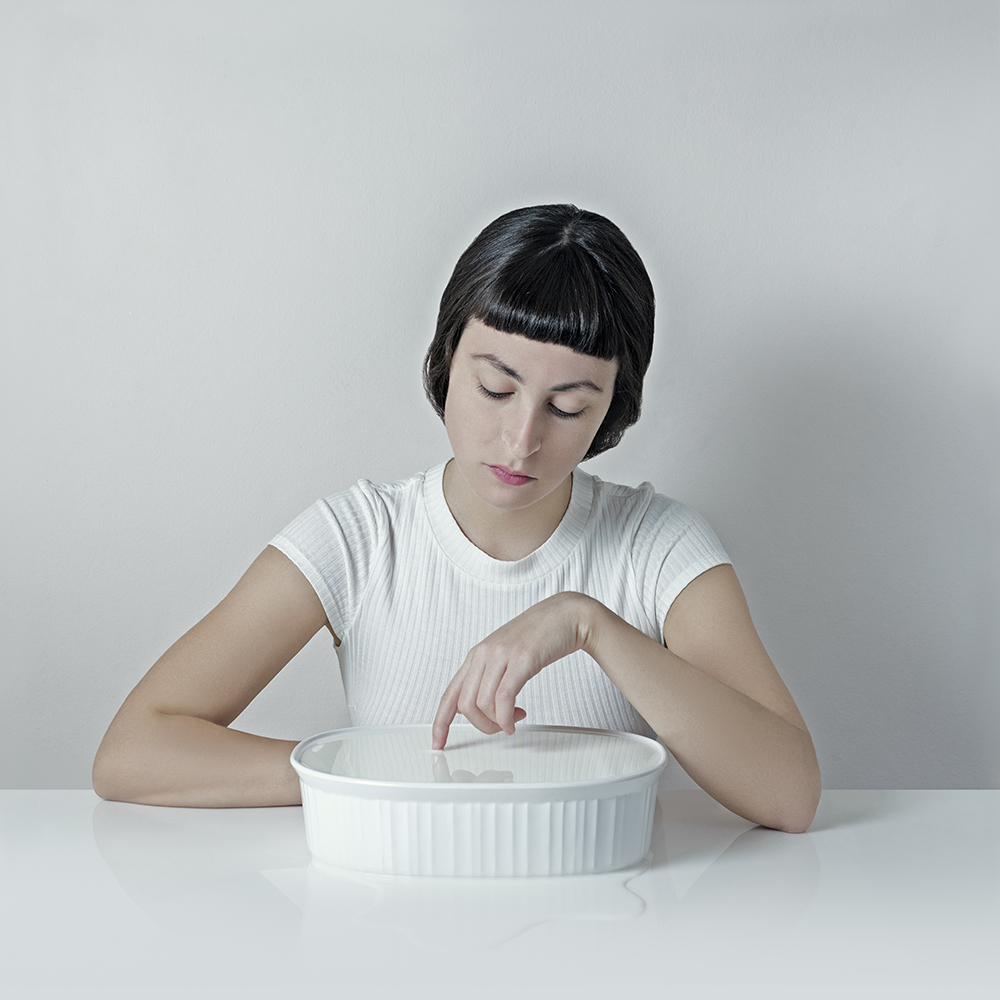Greece Week: Katerina Tsakiri: A Simple Place
There is this thing about self-portraits that I find particularly intriguing: Japanese artist Tomoko Sawada says of her work “I just trying to change my appearance, looks like not me, but all the pictures is me”; and it’s this almost obvious sounding comment that highlights for me the mind-boggling duality of self-portraiture – the self as one subject versus the multitude within ourselves. In Family Affair, photographer Katerina Tsakiri portrays women’s stereotypical roles in Greece, embodying perceived significant female figures in her childhood home. In her more recent work A Simple Place, she explores closer to core the “simplicity-multiplicity of the self-persona”
Katerina Tsakiri was born in Athens on March 20th, 1991. She studied Photography and Audiovisual Arts at the Technological Institute of Athens (T.E.I.A.) and at École Supérieure d’Art et de Design d’Orléans,France (I.A.V.) as an Erasmus Student. Currently she is a MFA student of Photography on Valand Academy of University of Gothenburg in Sweden (2019-2021).
Her work has exhibited in European photography festivals such as Athens Photo Festival, Circulation(s), Encontros da Imagem and other cities around Greece and France. Original prints of her project “Family Affair” belongs to MOMus’ (Metropolitan Organization of Museums of Visual Arts of Thessaloniki) private collection.The projects that she is working on are mainly autobiographical and are approached through a sociological and psychological lens. Self-portraiture and symmetry are the two basic elements of her work so far. At the same time she produces and directs dance films in collaboration with the choreographer and dancer Angelos Papadopoulos. Their films’ thematics are oriented on gender identity, narcissism and the sociolοgical perception of human body.
Family Affair
Family Affair is an attempt to portray women roles and stereotypes in Greek society. These images are the product of my childhood experiences.
I return to the house where I spent the first years of my life and I represent the ‘significant others’, images, the product of which were misplaced in my subconscious. I recall them in an effort to view versions of my identity through a ‘symbolic mirror’.
The eyes are closed so as to intimate the imaginary where these images exist and were (re)born.
A Simple Place
The series “A Simple Place” consists of 12 photographic self-portraits. It’s about reenactments of the self and space, based on the staged and scenographic simplicity, as well as the obsession of repetition. The series capitalises those elements attempting to examine/approach the dipole simplicity-multiplicity of the self-persona, through the atmosphere of an anticipation where everything changes whilst staying the same.
“Nothing has ever changed since I have been here. But I dare not infer from this that nothing ever will change.” Samuel Beckett , The Unamable.
I’m always fascinated by contrasting juxtapositions, so I love that you talk of a “dipole of simplicity and multiplicity” in your self-portraiture. The subject in a conceptual project is often acting, following the directions of the photographer, rather “just” being themselves. To what extent are you all the women you portray?
In fact I perceive the portraits I create as portraits of symbols rather than portrayed women. My characters are more like acting a situation than an actual person. These symbols which carry social, cultural and psychological references are always part of mine identity. For instance, in Family Affair project the characters all together represent the references that I had as a child about the role model of woman in Greek society. In a Simple Place my characters are all part of a mind frame, they depict an emotional period of my life.
Some (but not all) of your characters feel instantly recognizable to me, and I’m not Greek. Then again it’s possible I infuse them with a completely different cultural narrative and they could have two very distinct meanings to us both… Did you wonder in how much these Greek female stereotypes that you portray might in fact be universal?
I do believe that these stereotypical characters share cultural, religious and ethical features with other civilizations around the world. Colonization, wars, religion, etch, can determine the culture of a country and there are a lot of countries that interact with each other and mixed their traditions because of these parameters. However, I am not sure about the term universal since there are a lot of Asian and African countries that carry their own history and cultural signature.
My current project makes that I’m very interested in image labeling and so I noticed that you do not title your photographs at all. Can you elaborate on that choice?
Since I perceived each image on the work as a part of a general construction I didn’t feel the need to named them solely. I was also in denial to give more verbal clues to the viewers beyond the title and the statement. I wanted to let them improvise and create their own connections with the images. That was more important for me than to educate them about Greek society’s cultural details.
You finished Family Affairs in 2015, then last year you completed A Simple Place. Before even noticing the title, the word “simple” imposes itself when looking at your installation at the APhF. At the same time that work feels conceptually richer. How did that shift come about?
In A Simple Place I worked more “poetically” than in the first work. My idea was abstract so I decided to surrender into subconscious creations. But at the same time I have the sense that even the idea of one’s self could be abstract as well. The simplicity also came from the fact that I wanted to create a place of isolation where the character exists and denies or cannot “escape” at the moment. A place where you exist alone by yourself, where you are focused, so that should be simple.
You’re currently an MFA candidate in Sweden. You’ve made work exploring space and change. How has it been for you, and for your practice, to move from Athens to a Scandinavian country?
I have to admit that this was also a “naive” decision! I was interested in Scandinavian photography scene and cinema and that’s it! So I was triggered by an abstract idea of Sweden and here I am! So now I’m experiencing it as a creative experiment and I am waiting to see on what extent this could affect my work.
I asked a Dutch intern to comment on my selection for this Lenscratch “Greek week”. Her first reaction was “They all look so very Greek…”. Do you think there is such a thing as “an image being very Greek”, and if so, what would that mean?
I usually have the same sense when I view a work from a Greek photographer, I could speak about the Greek identity that carry the depicted environment or the people but I cannot specify a particular Greek aesthetic. At least not yet, in the way that created for instance the Greek weird wave on film industry. In Family Affair the Greek aesthetic is probably more profound because of the props and the background. I was also really inspired by Yorgos Lanthimos’ movie Dogtooth which actually belong to the Greek weird wave.
And finally, what’s next for you?
My aim is to keep working on feminine identity. But at the moment I see my studies as a productive space on time to experiment with my self and my techniques so I think that a next project is not going to be presented soon!
Posts on Lenscratch may not be reproduced without the permission of the Lenscratch staff and the photographer.
Recommended
-
Salua Ares: Absense as FormNovember 29th, 2025
-
Ricardo Miguel Hernández: When the memory turns to dust and Beyond PainNovember 28th, 2025
-
Pamela Landau Connolly: Columbus DriveNovember 26th, 2025
-
KELIY ANDERSON-STALEY: Wilderness No longer at the Edge of ThingsNovember 19th, 2025
-
Jackie Mulder: Thought TrailsNovember 18th, 2025

